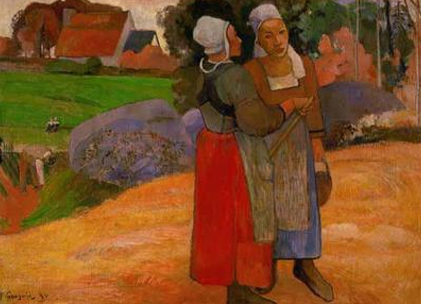Different views of pastoral life in 'Gauguin and the School of Pont-Aven' at the RA.
PONT-AVEN is an unexceptional village a few miles inland from the south coast of Brittany. It owes its fame to a hard- up artist who visited the place in 1886 and decided, two years later, to settle there. His name was Paul Gauguin.
Pont-Aven has been remembered as a staging post in the history of modernism, the place where Gau-guin, en route for Tahiti, began to sow the seeds of modern art. Gauguin gets star billing in 'Gauguin and the School of Pont- Aven', at the Royal Academy, but the exhibition also goes out of its way to do justice to the work of those Pont-Aven artists who have been consigned to the margins of art history by his fame.
This is a chance to discover the unsung figures of the Pont-Aven artists' colony: Armand Seguin, among others, who turned down Gauguin's invitation to join him in the South Seas and survived a suicide attempt in 1903 only to die of tuberculosis, at the young age of 34, a few months later; the Irish artist Roderic O'Conor, another to refuse Gauguin's hospitality ('But really,' he commented, 'can you see me setting out for the South Seas in the company of that maniac?') opting for settled anonymity. O'Conor later became the model for Somerset Maugham's portrait of a failed artist, the figure of Clutton in Of Human Bondage: 'a man of unusual character, mystical after the fashion of a time that had no leaning to mysticism, who was impatient with life because he found himself unable to say the things which the obscure impulses of his heart suggested'. 'Gauguin and the School of Pont-Aven' is not just about Gauguin but about the Seguins and...

Exchanging Peasantries
19-09-1989

